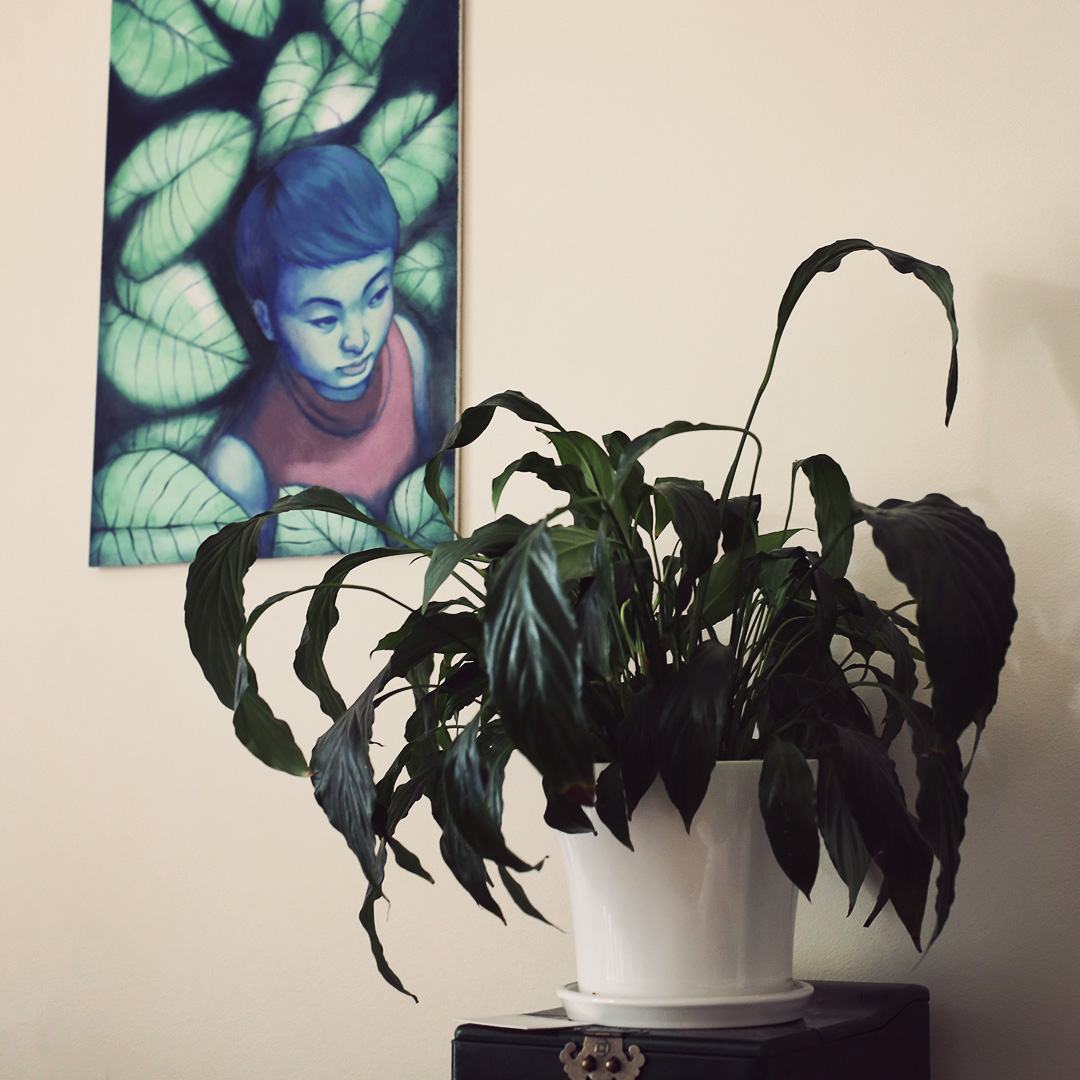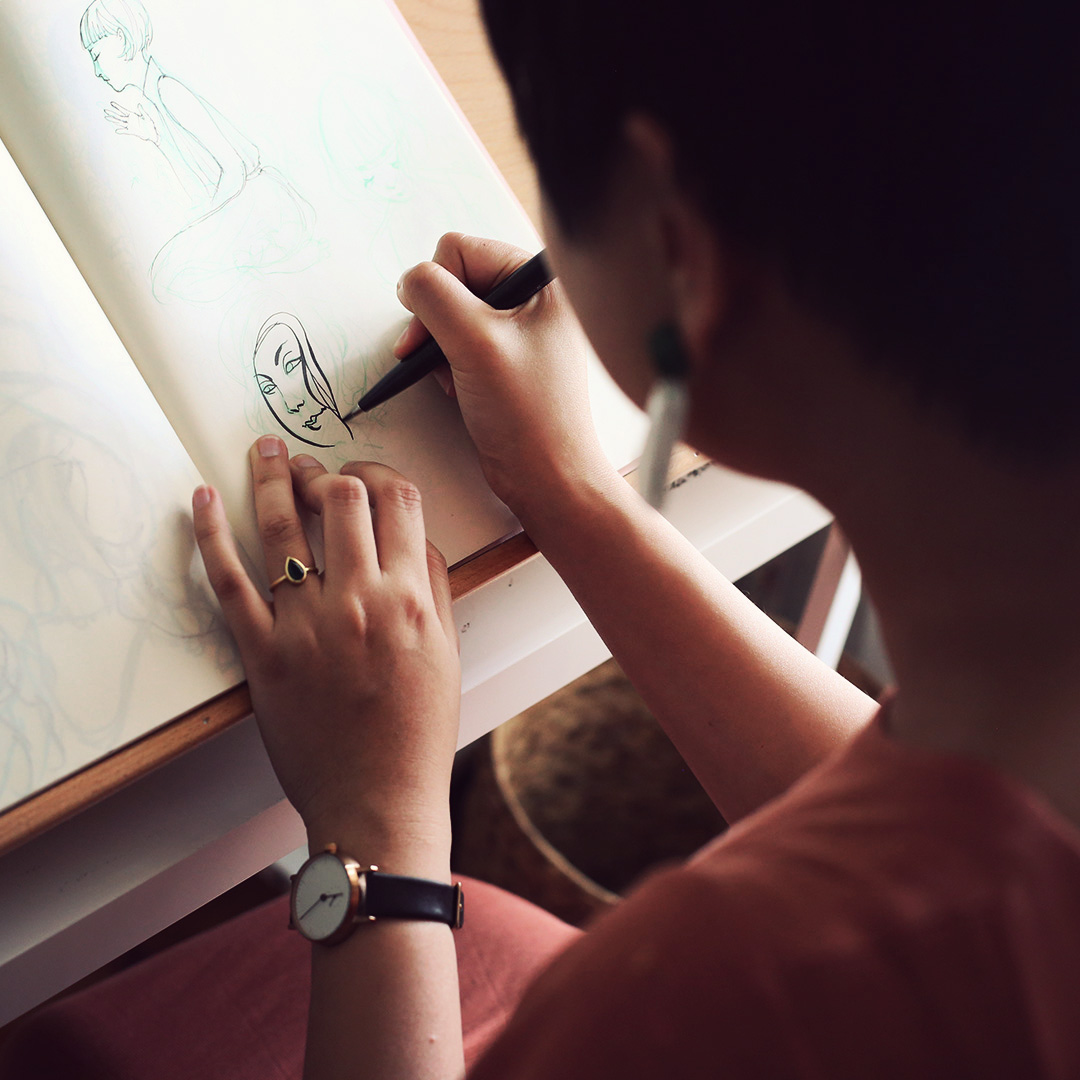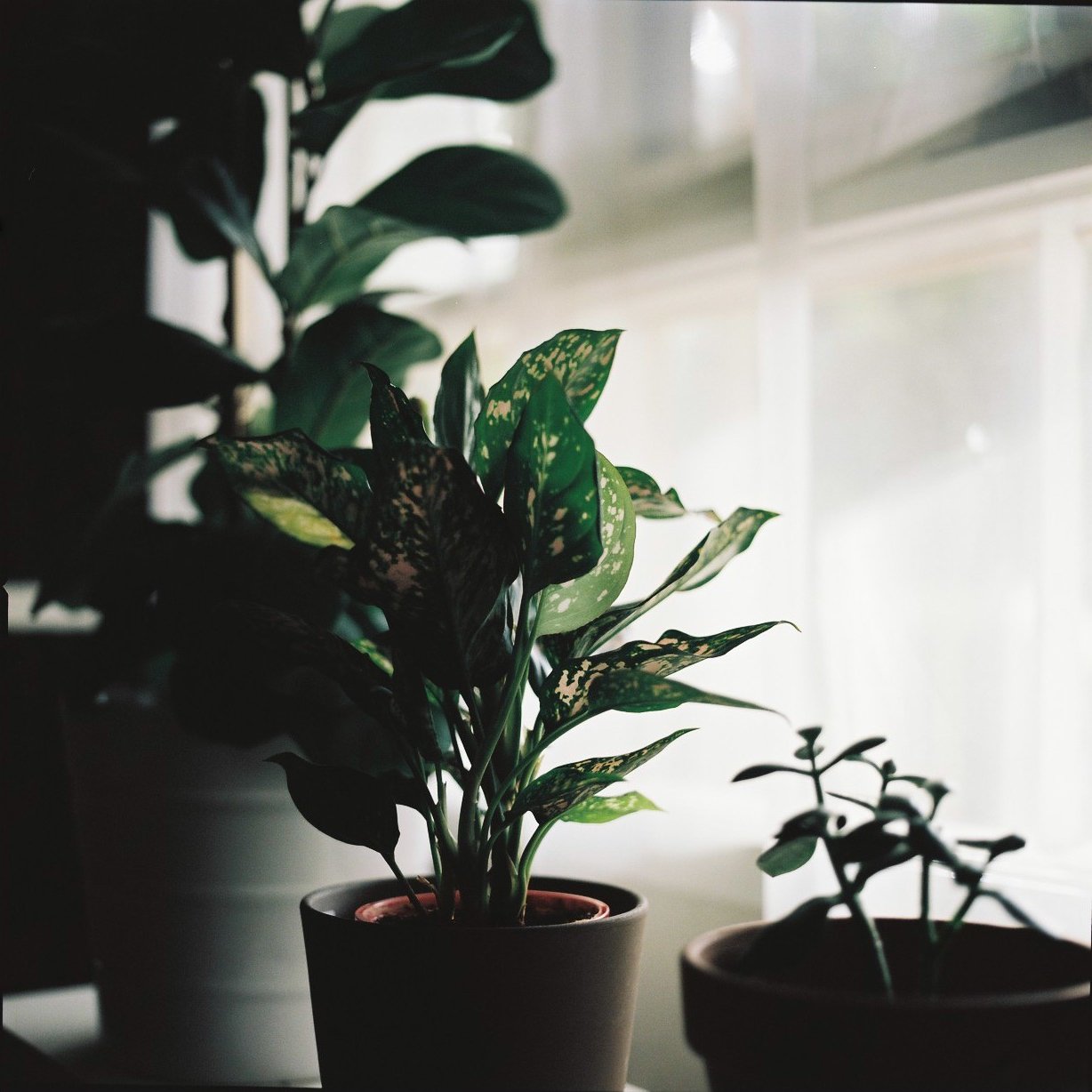Interview #17 — Viet-My Bui
By Leah Jing McIntosh
Viet-My Bui is an emerging illustrator and recent Communication Design graduate.She decided to pursue a creative vocation after seven years of studying and working in law.
Viet-My spoke to Leah Jing McIntosh about about defying expectations, imposter syndrome, and drawing what you know.
View Viet-My's illustration, 'It Is Here, Still'.
How did you decide to become an artist?
It began with the simple compulsion to draw and culminated through a series of personal trials. My journey to becoming an artist was particularly difficult due to my upbringing, in a very conservative, traditional Vietnamese household. It was an unconventional pathway. My parents were incredibly loving but very, very strict.
As a child, I was always drawing on walls, on myself. I never thought it was a thing that I could do as a profession because I wasn’t familiar with the concept of being an illustrator. I thought you could only be a graphic designer—that was the only creative profession was available. That, or a painter, about which my parents used to say, you’re only going to get money from that when you die. It wasn’t until I was about seventeen that I actually started engaging in creative fields. I studied Visual Communication, and was accepted into Top Design for my project.
When I finished school, I ended up studying Law, as it was what was expected of me. A part of me was open to the choice, in case I ended up loving it. Unfortunately that wasn’t the case—I continuously failed subjects and when I look back, I know I struggled because I was so unhappy. I think at the time, I also felt like a bit of a creative fraud for not being about to draw these intense feelings I was having. I realised later that it’s a pretty normal response but at the time I questioned whether I was a real artist because I couldn’t draw through the pain. I had a major case of Imposter Syndrome, and still do today.
What has been your biggest hurdle?
Race has played a big role in my life because it seemed to be a huge obstacle to pursuing a path of happiness. There were times I wished I was white because I felt it meant that my parents would've been so much more relaxed, or even supportive. For a long time, I associated my asian heritage with being uncool, uncultured, sheltered, immature, weak, and totally dependent.
I went to a primary school where the student body was predominantly caucasian. In that environment, I first noticed my upbringing was different. At school I became known for having strict parents. I felt my culture was different because the phrase ‘crazy asian parents’ was thrown around by my peers as a description of strictness or rigidity.
It was in high school that I really wanted my parents to be different, to be more white. Some of my friends would judge my family, so it made me want to hide more of my asian self and adopt what I thought to be a ‘cool white life’. I just wanted to belong. This felt isolating at times because many of my friends were white, and while they sympathised with my plight, they didn't quite understand the nuances of it all. I was told I was a banana—yellow on the outside, white on the inside—as a compliment.
Even though I’ve had a turbulent journey, it was one that helped me understand my parents more. I appreciated their fears and concerns for me, though not necessarily the way they expressed them. In knowing why they did the things they did, I understood so much more about the Vietnamese culture that I tried to reject as a teen. I understood that the culture my parents were brought up in revolved around filial piety, obedience, obligation, unconditional love, hierarchy, and above all, family. Their courage, tenacity and relentless hard work is what has given me every opportunity I have now in Australia.
I really had to wrestle with my own racial identity for a long time. I'm now proud of my identity as a Vietnamese-Australian. I am only beginning to explore my identity as a woman of colour and what that means to me.
Has the Internet influenced your creative process?
Enormously. I started posting my artwork online when I was fourteen, to Deviant Art. It was an amazing resource and community for me. I couldn’t afford much of a social life as a teenager, so finding Deviant Art opened my eyes to a new world—where I made my first artist-friends, and gained my initial supporter base. I was exposed to so many different artists of all calibres and learnt from their techniques. Over several years, I slowly built a presence for myself and amassed several thousand followers. Through my online profile, I started gaining traction and getting job offers, commissions, features in magazines and interviews when I was in my early twenties.
I was still pursuing law at that time and my mental health was in a poor state, so I couldn’t really capitalise on the amazing opportunities that came my way. But it made me feel like creating art was something I could actually do—and I saw tangible proof that my work resonated with others. Most of all, the internet gave me a well of confidence when I was so doubtful of myself. Individuals would write to me from across the world, telling me to keep going on my journey.
Describe your creative process.
I will do a bunch of tiny thumbnail sketches in my sketchbook to get a feel for the concept, and to get out any and all ideas I have. These are super rough and sometimes nonsensical. I might do some research on the topic, too. This is usually followed by a period of overthinking the piece: Will this look good enough? Will it be cool enough? Will people find it interesting enough? Then I do some self-care and remind myself that I don’t need external validation to create meaningful work and carry on.
I almost always go with the simplest, most intuitive of my thumbnails. I sketch out a larger, more detailed version on paper. (Sometimes this stage is done digitally.) It is most important for the work to feel organic and emotive at this point. There has to be a flow through the image—from the character’s face, to the background, to the composition. (Emotionally resonant music must be playing whilst I draw.)
I take a photo of the sketch and load it into Paint Tool SAI. I’ll start digitally mapping in colour. Colour is the most important stage of my work—it needs to communicate the feeling accurately. Then I start painting in the finer details. I like to mix up more realistic aspects with quite flat, graphic details.Following completion of the painting, I might transfer it over to Photoshop to edit the colours or increase the contrast.
How have you come to this point in your creative practice?
Through trial and error, hyper self-criticism, unreasonable expectations, heightened aspirations and then, an attempt to rewrite that harshness and replace it with forgiveness, curiosity, self-love and introspection.
Where I stand today as an artist is completely different to where I stood at twenty. I was much more interested in making beautiful work, and less about actively communicating a story or feeling. Nowadays, I focus more on narrative, feeling and authenticity.
Can you speak to your choice to depict Asian people, in so many of your drawings?
Recently, I’ve been conscious to be more representative of different kinds of beauty. I started gravitating towards drawing asian faces because, I think as an artist, you often unconsciously use your own face as an anatomical reference, because your face is what you’re most familiar with. My drawings have essences of me in them, so naturally the characters have asian features speckled in. Also, I rarely see asian characters in the vast amount of the artwork I consume online. I don’t do it to intentionally make a political statement, but I am glad to draw the women that I do. When I was younger, I used to get criticism for drawing girls too often—why didn’t I draw men, too? But I firmly believe I shouldn’t have to justify the work I create.
Recently, American Vogue has received criticism for their Diversity issue, photographing supermodel Karlie Kloss dressed as a Geisha. So in light of that, I was looking at your drawing for the Zumbo store—of Zumbo, an Italian-Australian, in traditional Chinese dress—and was wondering if you could you talk to that brief?
So Zumbo was opening a café in Chatswood, Sydney. He wanted to appeal to that demographic, so the design of the café is based on a Chinese apothecary—the brief I was given explained that the concept of the Café was ‘East meets West’. They asked me to draw Zumbo as himself but in a style that references Chinese cultural context.
Initially I looked into Chinese paintings. For me, at the time I was drawing it, it was a stylistic context. I tried to reference the styles of the scroll paintings and I really enjoyed the process. It was a fun exercise in referencing and paying homage to ancient art styles—so it made sense to me to include his face in the artwork. His brand is his name and his recognisable face. But I didn’t even stop to think whether or not it was offensive. Nor did I consider whether there were other ways to portray his brand without including his likeness in the image. I feel like I was so swept up by the job, that I totally overlooked the cultural line I was overstepping.
It can be incredibly tricky, and is something I've been wrestling with too—how do we begin to navigate the space between cultural appropriation and cultural appreciation?
I honestly don’t know. It involves sensitivity, respect and thinking beyond our own bubble in society. It also begs us to question privilege and assimilation. I’m really glad you brought this up, because it is confronting. This is challenging me to reflect on my position as an artist, and the work I want to make.
I think discomfort is a key factor in all of this: we must be willing to endure the discomfort of conversations regarding cultural appropriation, especially when we ourselves might be unknowing perpetrators. We must always be open to educating ourselves, being open-hearted and closely examining the cultures we engage with.
What are your aesthetic inspirations?
My main inspiration is found through colour. My work is based on emotions that are emitted through colour. I usually start off with feeling the colours first. Sometimes I listen to a piece of music that conveys the emotion I want in the piece, and try to capture that feeling with colour. And then the concept comes out of that. I am for my work to have an organic flow to it – no rigidity or harshness.
I’m also inspired by dreams. I’m really interested in that space between wakefulness and sleep. I try to reflect that sensation in my work so that there is enough realism for the viewer to relate to it but there’s a disconnect as well. I like to incorporate a dreamlike world into my pictures because I think it’s about creating a fantastical narrative that’s based in something real.
I try to communicate as much emotion as I can through the character’s face and body language as well. For my final project at uni, I experimented with animation and a more reductive, gestural illustration style. I'm keen to explore this further
What materials do you use?
For a long time, digital painting was my favourite. I loved the possibilities that it affords you as an artist, and the flexibility. It is also the most efficient method of creating work, and is great to use when making work for clients. It’s very easy to tweak things if they want a colour change, for instance.
I use my Wacom Intuos4 pen tablet in a program called Paint Tool SAI. Recently, I upgraded to a Wacom Cintic –a gift from my partner John. Adobe Photoshop is used for post-processing the work and tweaking things.
I’ve also been using traditional media. I’ve really enjoyed playing around with brush pens, and brushes with ink.I love how imprecise and gestural I can be with liquid mediums— but I also find it extremely satisfying to really focus on creating a perfect stroke! The beauty of traditional media is that you only get one chance at that brush stroke. Nothing looks exactly the same, and there’s no undo button. I enjoy flexing and building upon my technical skills, while remaining loose at the same time.
What is your dream project?
I’d like to make a storybook one day. One of my favourite artists, Shaun Tan, is such a master of wordless storytelling. The Arrival was the first wordless storybook I’d ever come across and it’s so detailed and so rich. He says so much without literally saying anything and that’s kind of what I want to get towards, in terms of with my work.
What are you currently creating?
Right now? Nothing. I’ve been on a sabbatical for the past six months. It’s taken almost a decade to be here, and I am a little tired. So while part of me wants to jump into making art, I actually want to take a break because I’ve been pushing myself really hard and I didn’t realise how exhausting that journey was. Going against my parents’ wishes has been particularly challenging. Our relationship has been healing gradually and in patches, but it will take time, and parts of it will never be the same.
Soon, I’d like to go back into creating artwork again. My goal is to just make without the pressure of having it as a source of income, or trying to advertise anything. I’ve never really had the opportunity to make artwork just for me prior to this – without briefs, obligations, pressure or guilt. I feel it’s been years since I really flexed my drawing muscles. My voice is different now to when I was in my early twenties, and my goals are different now. My aesthetic is different and what I want to achieve is totally different. So I’m interested to uncover what there is now and who I am underneath
A group of friends and I are also forming an illustration collective called You See Us. We have plans to launch a kickstarter down the track. Watch this space.
Do you have any advice for emerging artists?
Find your tribe—the people who will support you, hear you, see you. Maybe it’s your family, your dear friends, internet pals you’ve never met. Find them and hold them close, because they will be your strength when you feel doubt.
Don’t be scared of moving at your own pace. Don’t place pressure on yourself to make money from your work before you even know who you are as an artist.
Allow yourself to be imperfect.
Who inspires you?
People who genuinely seek to lift others up, while being true to themselves. People who don’t keep their cards close to their chest—people who are generous with their knowledge.
I’m also inspired by artists Jillian Tamaki, Yuko Shimizu, Leslie Hung, Victo Ngai, Matt Huynh, Miranda Tacchia, Sister Corita Kent, Carla Mcrae, and David Booth.
How do you practise self-care?
This current period of rest is one of my greatest acts of self-care. Rest is so vital to recovery, regeneration and refocus. Most things in nature enter a period of dormancy to resurge anew. To give myself permission to slow down and spend half a year not doing anything creative is liberating. I have learnt so much about myself during this time.
Having a mental illness means that self-care is particularly important for my wellbeing. To keep my anxiety and depression at bay, I engage in soothing and fulfilling activities such as journaling regularly and spending time in stillness (and sometimes silence). Listening to guided meditation. As an introvert, I also require lots of solitude. Saying no is important – whether that’s saying no to a project I’m not really interested in, or declining an invitation to go out because I really need some down time.
I try to simplify as much wherever possible. I am moving towards slower living, and minimizing the clutter in my life. That includes eliminating the company of individuals who take more than they give. And investing in authentic relationships. It also means donating things I no longer find value in. I am also engaging in slow fashion and now have a leaner closet. This all leaves more room for the things that matter more.
What does being Asian-Australian mean to you?
It means that my Vietnamese heritage is so deeply vested in me, and informs who I am today. It illustrates that I am pieces of everything that I touch. It means that there are many questions I seek to answer, and connections with myself and the surrounding community that I must consider.
Find out more
Interview & photographs by Leah Jing McIntosh







